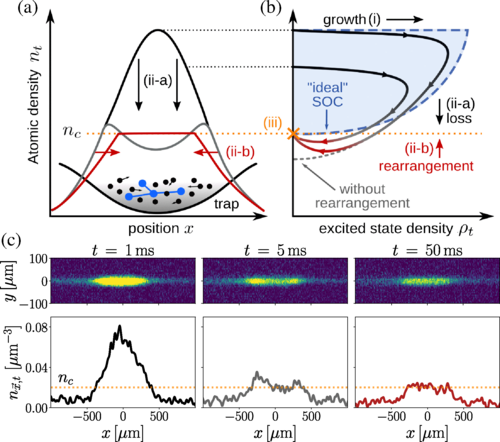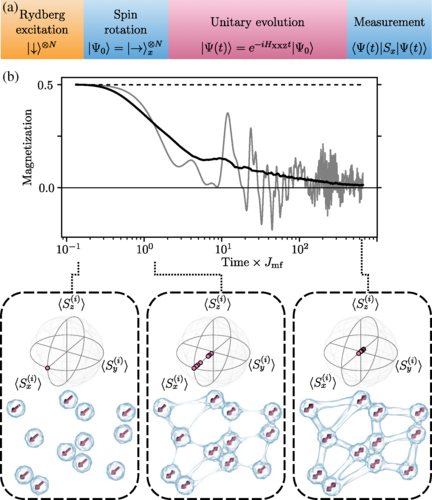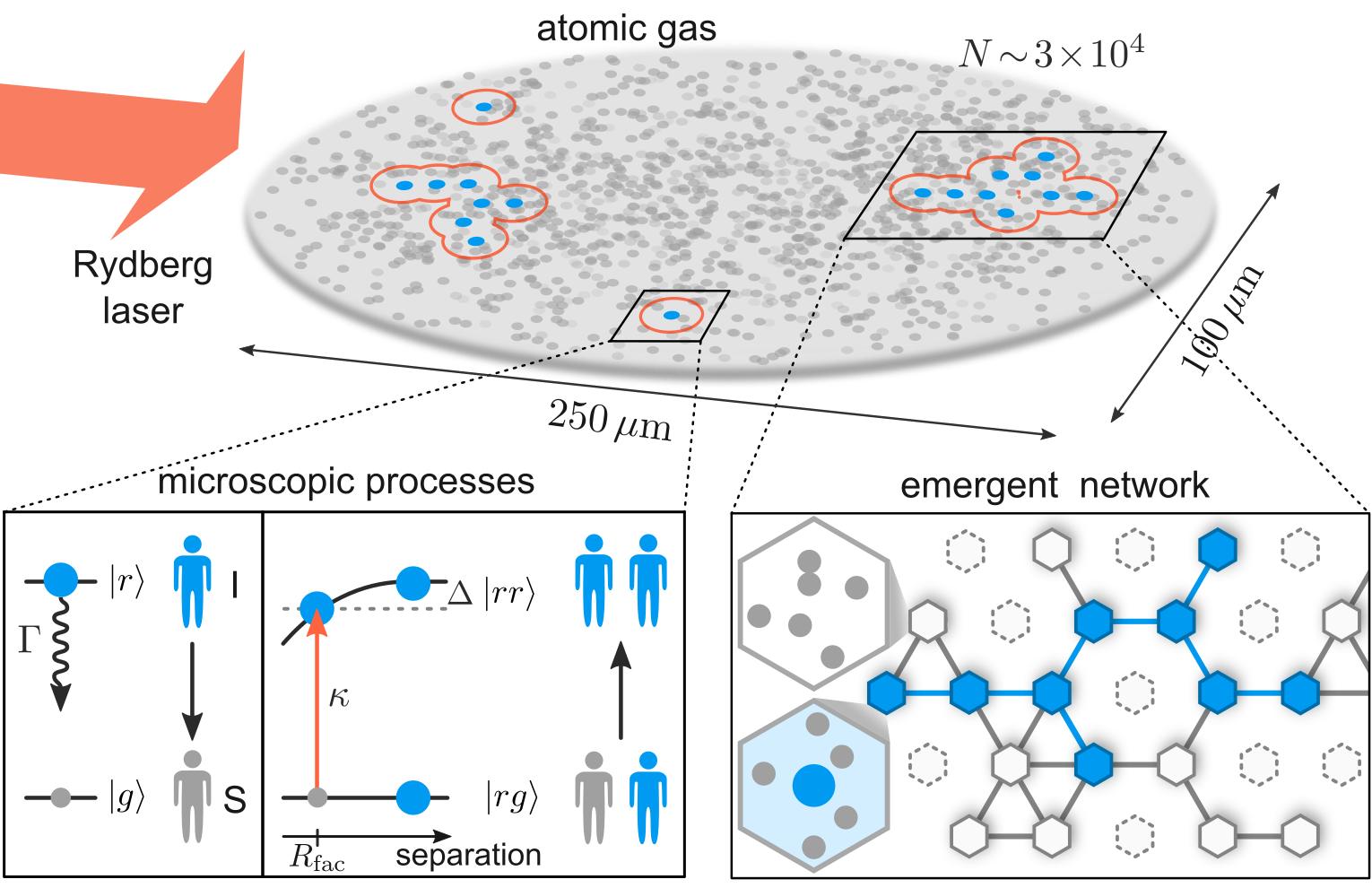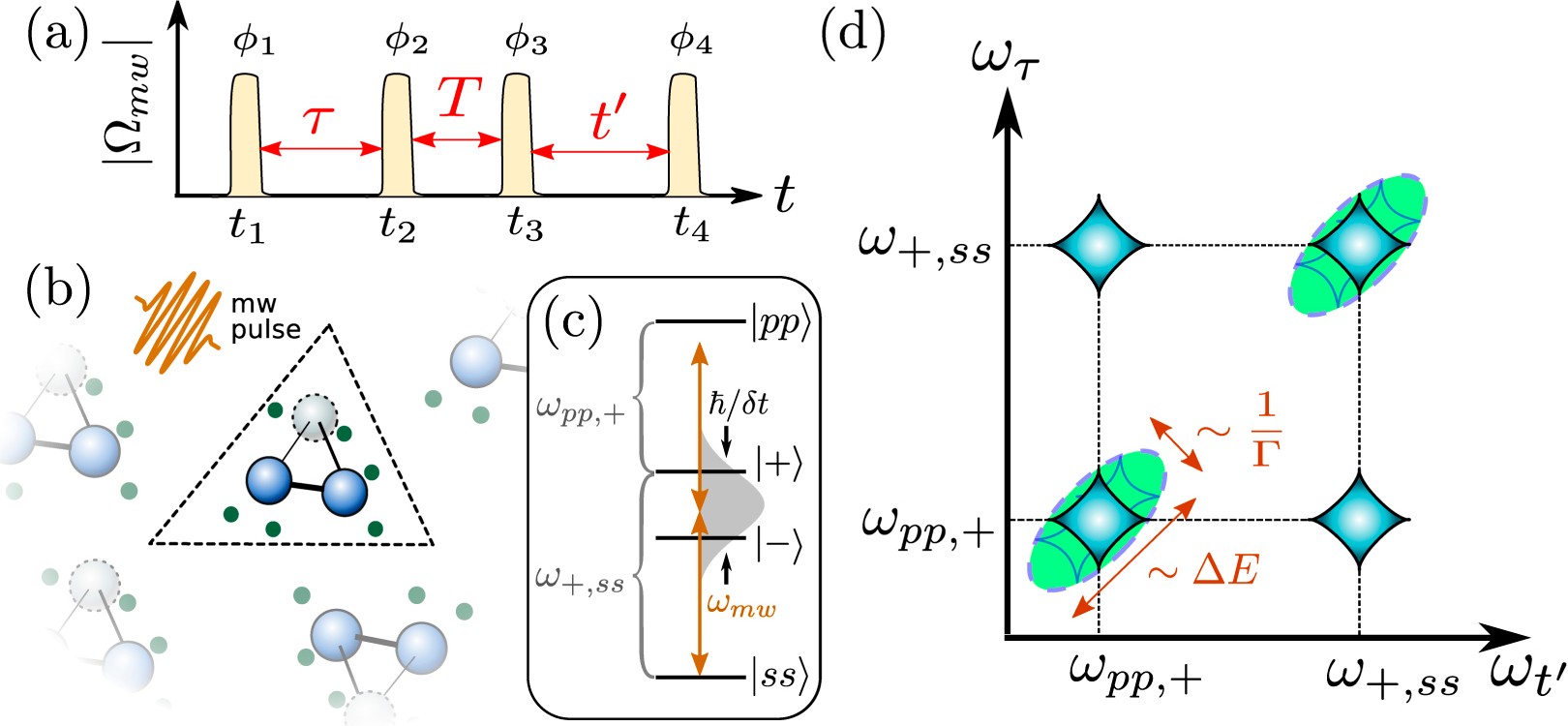Two of the grand challenges of modern science concern: (I) extending our quantitative understanding of matter to out-of-equilibrium scenarios, and (ii) uncovering general laws governing how complex non-equilibrium phenomena emerge from underlying physical principles. In fact, most physical systems found in nature are not in thermodynamic equilibrium, as, for instance, their inevitable coupling to the environment can give rise to fundamentally new behaviour. Understanding open quantum many-body systems poses a significant challenge, since theoretical methods capable of dealing with such scenarios are less developed and it is experimentally difficult to devise observables capable of distinguishing their vastly different types of behaviour.
We experimentally investigate the dynamics and phase structure of an open quantum systems consisting of clouds of ultracold atoms laser-excited from the ground state to a Rydberg state. The strong interplay between coherent driving, dissipation and interactions gives rise to wide variety of new phenomena.
More details about our research can be found in the following papers
Hydrodynamic Stabilization of Self-Organized Criticality in a Driven Rydberg Gas published in Phys. Rev. Lett.
Signatures of self-organized criticality (SOC) have recently been observed in an ultracold atomic gas under continuous laser excitation to strongly interacting Rydberg states [S. Helmrich et al., Nature, 577, 481–486 (2020)]….
Glassy Dynamics in a Disordered Heisenberg Quantum Spin System published in Phys. Rev. X
Understanding the dynamics of strongly interacting disordered quantum systems is one of the most challenging problems in modern science, due to features such as the breakdown of thermalization and the…
Epidemic growth and Griffiths effects on an emergent network of excited atoms published in Nat. Commun.
We have discovered a striking correspondence between the excitation dynamics of a laser driven gas of Rydberg atoms and the spreading of diseases, which in turn opens up a controllable…
Two-dimensional spectroscopy of Rydberg gases published in New J. Phys
Two-dimensional (2D) spectroscopy uses multiple electromagnetic pulses to infer the properties of a complex system. A paradigmatic class of target systems are molecular aggregates, for which one can obtain information…
Unitary and non-unitary quantum cellular automata with Rydberg arrays published in PRL
We propose a physical platform for quantum information processing that is inherently parallelisable, does not require individual addressing and takes full advantage of both unitary and non-unitary multiqubit interactions. The…
Observation of Self Organised Criticality in an Ultracold Atomic Gas published in Nature
We present the experimental observation of self-organised criticality in the dynamics of a driven-dissipative gas of ultracold atoms and a first characterisation of its universal properties. Self organisation provides an…
Diffusive to non-ergodic dipolar transport in a dissipative atomic medium in Phys. Rev. Lett.
We highlight a well controlled experimental system for studying transport phenomena consisting of strongly interacting impurities in a Rydberg-dressed ultracold gas, which due to its long-range 1/R^3 hopping and controllable…
Uncovering the nonequilibrium phase structure of an open quantum spin system, in Phys. Rev. A
We experimentally and theoretically investigate the nonequilibrium phase structure of a well-controlled driven-dissipative quantum spin system governed by the interplay of coherent driving, spontaneous decay, and long-range spin-spin interactions. Statistical…
Relaxation of an isolated dipolar-interacting Rydberg quantum spin system, in Phys. Rev. Lett.
How do isolated quantum systems approach an equilibrium state? In collaboration with Prof. Matthias Weidemüller (Physics Institute, University of Heidelberg) and Prof. Jürgen Berges (Institute for theoretical physics, University of…
Full Counting Statistics of Laser Excited Rydberg Aggregates in a One-Dimensional Geometry, in Phys. Rev. Lett.
Full Counting Statistics (FCS) can provide valuable information on manybody systems especially if the underlying correlations cannot be directly imaged. We have used the FCS of Rydberg excitations to gain…




